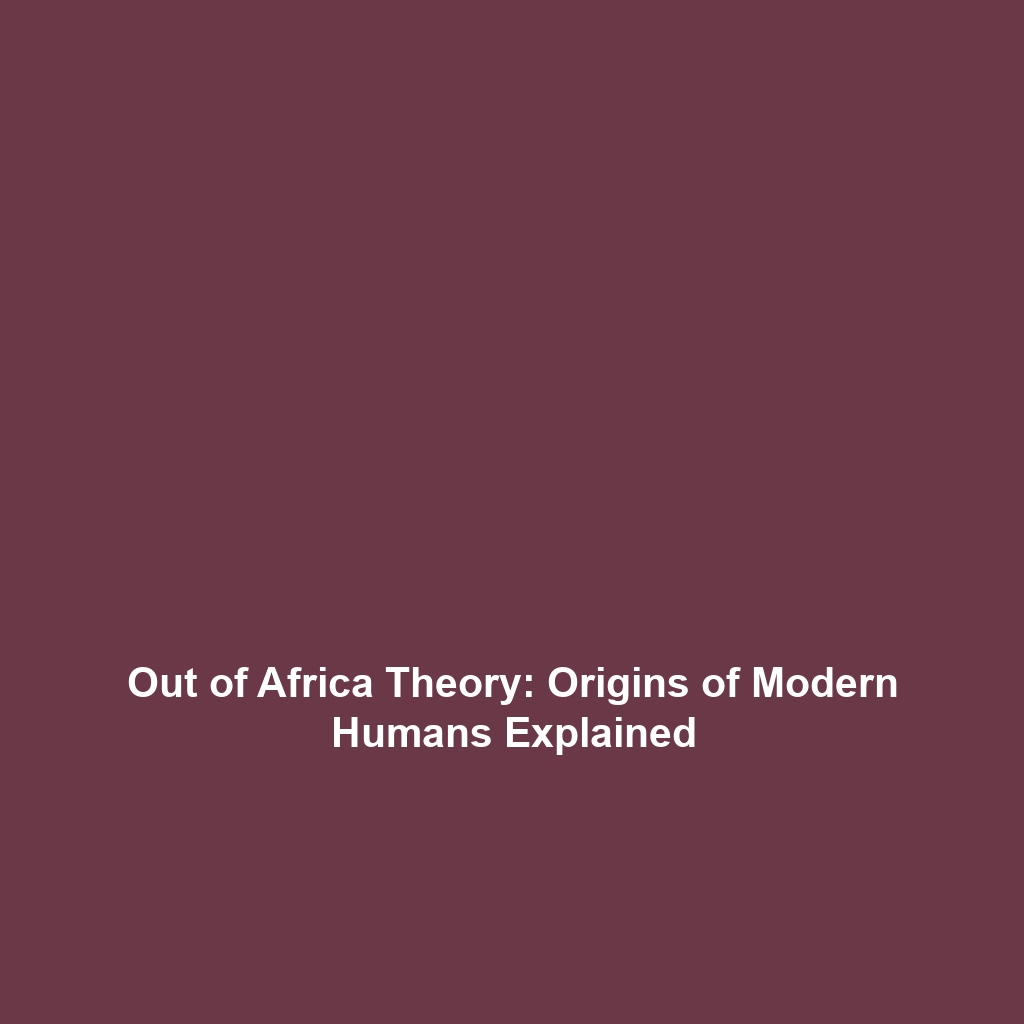Out of Africa Theory: The Dominant Hypothesis in Human Evolution
Introduction
The Out of Africa theory posits that modern humans, Homo sapiens, first emerged in Africa before dispersing across the globe. This dominant hypothesis plays a crucial role in understanding human evolution by suggesting that all contemporary human populations share a common ancestry traced back to Africa. Understanding this theory is essential for grasping the complexities of our evolutionary history, migration patterns, and genetic diversity among human populations today.
Key Concepts
Evolutionary Background
The Out of Africa theory is primarily supported by a combination of fossil evidence and genetic data. Key concepts include:
- Homo sapiens Emergence: Evidence indicates that Homo sapiens evolved in Africa approximately 200,000 to 300,000 years ago.
- Genetic Diversity: African populations display greater genetic diversity than those found in other regions of the world, suggesting a longer evolutionary history.
- Migration Evidence: Archaeological findings and DNA analysis highlight several waves of migration from Africa to other continents around 60,000 to 70,000 years ago.
Applications and Real-World Uses
The understanding of the Out of Africa theory has profound implications in various fields:
- Anthropology: It informs our understanding of human cultural development and adaptation.
- Genetics: Applications in tracing lineage and understanding genetic disorders prevalent in specific populations.
- Conservation: The conservation of genetic diversity through the study of ancient human migrations offers insights into current species survival.
Current Challenges
Despite its acceptance, the Out of Africa theory faces several challenges:
- Fossil Gaps: There are still significant gaps in the fossil record that obscure our understanding of human evolution.
- Alternative Models: Competing hypotheses, such as the Multiregional Continuity model, challenge the idea of a single origin.
- Genetic Complexity: The complexities of polygenic traits and interbreeding with archaic humans like Neanderthals complicate migration narratives.
Future Research and Innovations
Future research is poised to illuminate further aspects of the Out of Africa theory through:
- Advanced Genetic Analysis: Technologies such as genome sequencing will enhance our understanding of human migration patterns.
- Archaeological Developments: New archaeological finds may provide additional data about early human behavior and migration.
- Interdisciplinary Studies: Collaboration among geneticists, archaeologists, and anthropologists will foster a more comprehensive view of human evolution.
Conclusion
The Out of Africa theory fundamentally shapes our understanding of human evolution by tracing the origins and migrations of modern humans. As ongoing research uncovers new evidence, it is essential to stay informed and engaged with scientific advances in anthropology and genetics. For more about the evolution of human species and the implications of these findings, read our articles on human migration and genetic diversity.
